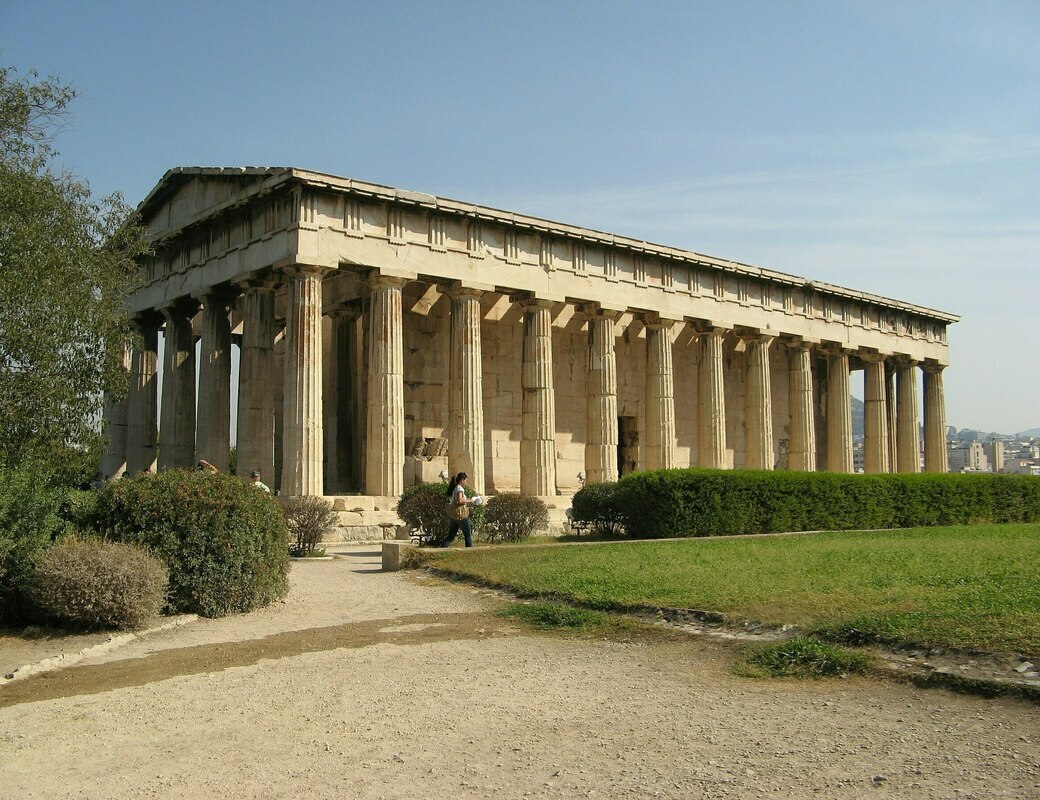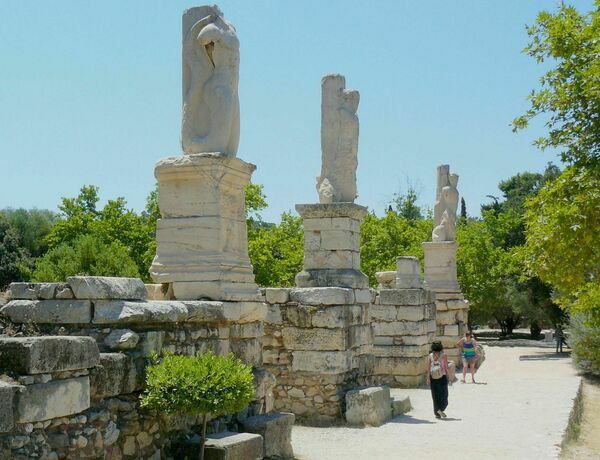
The Temple of Hephaestus, also known as the Hephaisteion, is an ancient Greek temple located on the northwest side of the Ancient Agora of Athens. It was built in the 5th century BCE and is considered one of the best-preserved ancient Greek temples in the world.
The temple was dedicated to the Greek god Hephaestus, who was the god of metalworking, blacksmiths, and craftsmen. The temple was also sometimes associated with Athena Ergane, the goddess of crafts.
The Temple of Hephaestus is a Doric-style temple made of marble and limestone. It features 34 columns and a rectangular floor plan with a central cella (sanctuary) surrounded by a peristyle (a colonnade that surrounds the temple). The friezes on the temple depict scenes from Greek mythology, including the labors of Hercules and the battle between the Lapiths and the Centaurs.
Despite being built over 2,400 years ago, the Temple of Hephaestus remains in excellent condition, thanks in part to its use as a Christian church in the Byzantine era. Today, it is a popular tourist attraction and an important example of ancient Greek architecture and engineering.





